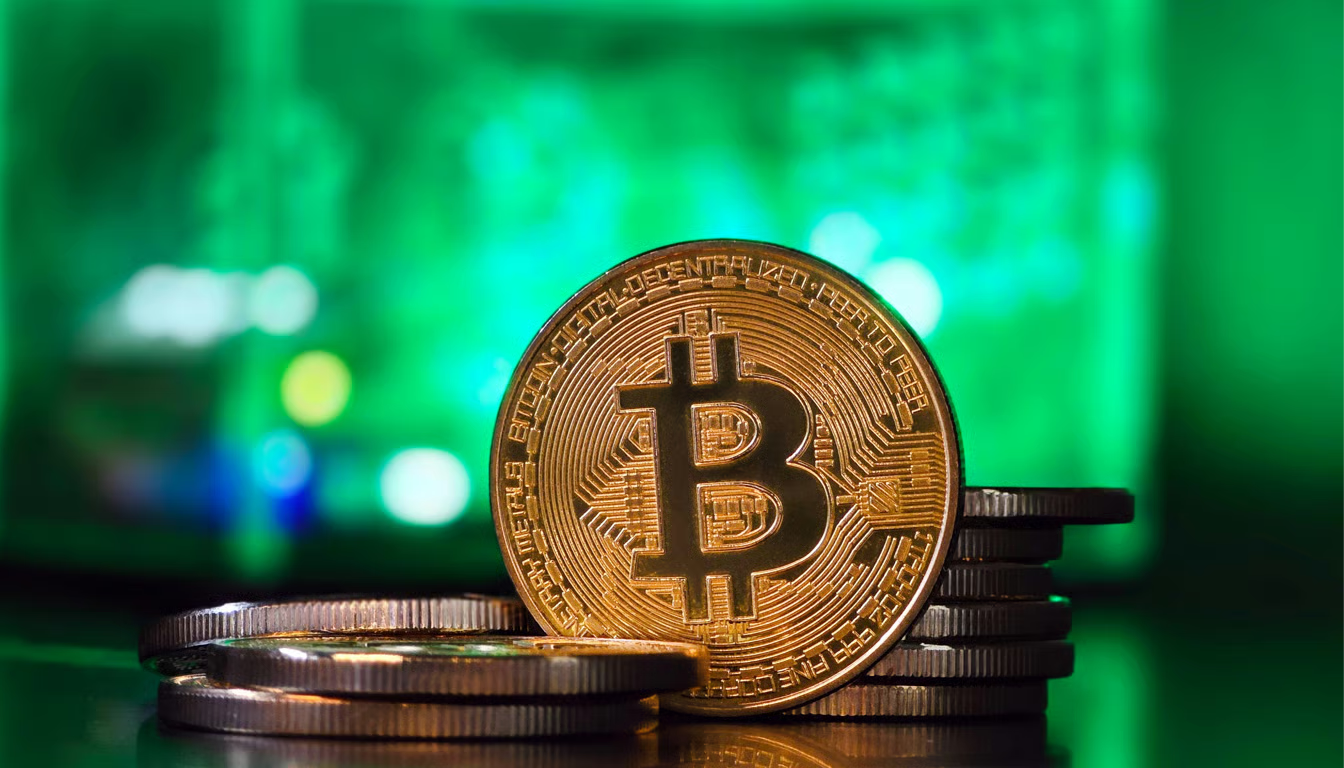Is there a limit to a country’s debt and debt growth? If government debt continues to grow unchecked, what will happen to interest rates and
everything influenced by them? Can a major country like the United States, which issues the world’s primary reserve currency, go bankrupt?
If so, what would that look like? Is there a traceable “debt supercycle” that can signal when to worry about debt problems and how to
respond?
These are not just academic questions for economists; they are questions investors, policymakers, and virtually everyone need to answer
because the outcomes will significantly impact our interests and decisions. Yet, clear answers remain elusive.
Below is an excerpt from Ray Dalio’s new book How the Nation Goes Bankrupt, focusing on the late stages of the debt supercycle and
possible future developments. It aims to provide some reference value for overall portfolio strategy.
From my research, I have identified the existence of long-term debt supercycles. These cycles invariably lead to massive debt bubbles and
subsequent busts. I have observed that since 1700, there have been approximately 750 currency/debt markets, of which only about 20% still
exist today. All surviving currency/debt markets have gone through a mechanical process accompanied by severe devaluation.
This long-term debt supercycle has been described as early as the Old Testament and has repeatedly played out across various Chinese
dynasties over thousands of years, signaling the decline of empires, nations, and regions.
When government debt is large and rapidly growing, assuming this time will be different without studying past outcomes is, in my view, a
very dangerous oversight.
It’s like assuming civil wars or world wars will never happen again simply because we haven’t experienced them in our lifetime — ignoring
the mechanisms that caused those events.
We first need to describe typical dynamics, then analyze how and why different cases evolved differently, allowing people to track current
conditions using this model and understand the dynamics unfolding and those likely to come given the current context.
By doing this, we can not only observe many similar situations but also better grasp future trajectories.
Comparing current dynamics to this framework, I find that we are moving toward a scenario in which governments and central banks may
“go bankrupt” as they have hundreds of times in the past, triggering significant political and geopolitical consequences.
Key Drivers of the Grand Cycle
This leads to an important insight: the overall supercycle is composed of several interrelated factors, with the debt supercycle being just one
of them.
Specifically:
The debt supercycle influences and is influenced by roughly concurrent cycles,
The domestic political and social harmony or conflict supercycles, which both affect and are affected by,
The geopolitical harmony or conflict supercycles among nations. These cycles are further influenced by
Major natural disasters such as droughts, floods, and pandemics, and Significant technological advancements.
The combination of these five factors forms the overall supercycle of peace and prosperity versus conflict and depression. Because these
factors interact and influence everything, they must be considered together. It is important to note how these cycles have operated and
interacted in the past and continue to do so today. The debt supercycle, in particular, also interacts with the other factors, shaping the
development path we are currently on.
How the Debt Cycle Works
Credit is a crucial tool for funding expenditures and can be created quite easily.
Because one person’s spending is another person’s income, when a large amount of credit is created, both spending and income increase,
most asset prices rise, and almost everyone enjoys this situation—although repaying debt is less pleasant.
As a result, governments and central banks tend to create substantial amounts of credit. However, credit also creates debt that must be
repaid.
This leads to an opposite effect—when debt needs to be repaid, spending decreases, income falls, and asset prices decline. People do not
like this situation.
In other words, when someone (the borrower) borrows a principal amount at some cost (interest rate), their spending can temporarily exceed
their income and savings.
But over the long term, they are required to repay the debt (principal plus interest), and when repayment is due, their spending must be less
than their available funds.
This dynamic is why the credit/spending/debt repayment process is inherently cyclical.
Short-Term Debt Cycle
Anyone who has experienced multiple short-term debt cycles should be very familiar with this process. In the early stage of a short-term
debt cycle, economic growth and inflation are below expectations, interest rates are lower than inflation and also below the returns of other
investments, and money and credit are easy to access.
This environment encourages borrowing for consumption and investment, which in turn drives asset prices, economic growth, and inflation
higher—often surpassing expectations. At this point, the supply of money and credit becomes constrained, interest rates rise above inflation
and above the returns on other investments.
This leads to reduced borrowing, lower consumption and investment, causing asset prices to fall, economic growth to slow, and inflation to
decline.
In response, interest rates fall, money and credit supply loosen again, and the cycle restarts. These short-term debt cycles typically last
about six years, with a margin of around three years either way.
Short-Term Debt Cycles Accumulate Into a Major Long-Term Debt Cycle
What has not received enough attention is how these short-term debt cycles accumulate to form larger, long-term debt cycles.
Because credit is a stimulus that drives prosperity, people desire more of it and tend to create additional credit. This causes debt levels to
gradually rise, making the highs and lows of most short cycles higher than those of previous short cycles.
These short-term debt cycles build up into a long-term debt cycle, which ends when elevated debt levels become unsustainable. The
capacity to take on new debt differs between the early and late stages of the long-term debt cycle. In the early stage, debt burdens are
lighter, and credit/debt is more likely to fund projects with high profit potential. In the late stage, debt burdens increase and lenders face more
limited investment options.
In the early stage of the long-term debt cycle, borrowing—even in large amounts—and debt repayment are relatively easy. These early short
cycles are mainly driven by borrowing and consumption as described earlier, while also influenced by cautious sentiment from painful
memories of previous monetary tightening episodes.
At this stage, debt and total debt servicing costs are low relative to income and other assets. Increases and decreases in credit, spending,
debt, and debt servicing costs are primarily governed by the mechanisms described above in the short-term debt cycle, with relatively low
debt risk.
However, in the late stage of the long-term debt cycle, debt and debt servicing costs exceed income and the value of other assets available
to meet debt obligations, raising the risk of default.
Moreover, in the late stage, when debt assets and liabilities surpass income, balancing sufficiently high interest rates to satisfy lenders
without imposing unbearable rates on borrowers becomes increasingly challenging.
This is because one person’s debt is another’s asset, and both must be satisfied. Thus, unlike short-term debt cycles, which end due to the
mechanisms outlined above, the long-term debt cycle ends because debt burdens become too heavy and unsustainable.
In other words, since borrowing and spending are more enjoyable, debt and debt servicing costs can expand excessively if unchecked,
eroding individual purchasing power and crowding out other consumption. This dynamic explains the formation of the long-term debt cycle.
Looking across millennia and multiple countries, the driving force behind debt cycles that lead to severe market and economic disruptions is
the creation of unsustainable large debt assets and liabilities relative to the existing money, goods, services, and investment assets available.
Simply put, debt is a promise to deliver money in the future. When the promised amount exceeds the money available to fulfill those
promises, a debt crisis occurs.
When this happens, central banks are forced to choose between:
a) printing large amounts of money and depreciating the currency
b) refraining from printing money and opting for large-scale debt default.
Ultimately, central banks always choose to print money and depreciate the currency. Regardless of which path is taken (default or currency
depreciation), excessive debt creation ultimately leads to depreciation of debt assets such as bonds.
Phases of the Long-Term Debt Cycle
Stages of the Debt Cycle
The primary difference between short-term debt cycles and long-term debt supercycles lies in the central bank’s ability to reverse their
direction.
In the short-term debt cycle, the economic contraction phase can be reversed by creating substantial amounts of money and credit, allowing
the economy to recover from a deflationary slump. At this stage, the economy can grow without triggering significant inflation.
However, the economic contraction phase of the long-term debt cycle cannot be reversed simply by increasing money and credit because
existing debt growth and debt asset levels have become unsustainable. Holders of debt assets seek to shed these assets, believing that,
regardless of the circumstances, these assets will no longer serve as effective stores of wealth.
The progression of the long-term debt cycle can be likened to stages of a life cycle, each with distinct characteristics. By identifying these
features, one can roughly estimate where the cycle stands and make some predictions about its possible path forward.
Simply put, the long-term debt cycle begins with prudent money and credit supply, gradually shifts to loose money and credit conditions,
ends with a debt bubble bursting, and finally returns to prudent money and credit conditions out of necessity.
More specifically, the cycle initially features healthy private sector borrowing with normal debt servicing; then private sector over-borrows,
runs into losses, and faces debt servicing difficulties; next, the government sector attempts to assist but also over-borrows, suffers losses,
and faces its own debt servicing issues; then the central bank tries to help by “printing money” and buying government debt, but debt
servicing problems persist, leading the central bank to monetize even more debt whenever possible (i.e., when debt is denominated in the
currency the central bank can print).
While not all cases follow this pattern exactly, most go through the following five stages:
Prudent Money Stage: Net debt levels are low, money is stable, the country is competitive, and debt growth supports productivity growth.
Income generated is sufficient to service the debt, leading to increased financial wealth and confidence.
Debt Bubble Stage: Debt and investment grow faster than income available for debt servicing.
Top Stage: The bubble bursts, accompanied by contraction in credit, debt, markets, and the economy.
Deleveraging Stage: A painful process where debt and debt servicing levels are reduced to align with income, restoring sustainability to debt
levels.
End of Major Debt Crisis: The economy reaches a new equilibrium and a new cycle begins.
The Relationship Between Monetary Policy Phases and the Long-Term Debt Cycle
The stages of the debt supercycle are also reflected in the types of monetary policies used by central banks. As the debt supercycle
progresses, central banks need to adjust their monetary policies to sustain credit/debt/economic expansion. Therefore, by observing the
types of monetary policies they employ, one can infer the approximate stage of the debt supercycle.
The various stages of monetary policy and the underlying conditions are as follows:
Stage 1: Pegged Currency (i.e., Hard Currency) System (MP1)
This monetary policy existed from 1944 to 1971. When the bubble burst, the aforementioned "bank runs" occurred, with people shifting from
credit assets to hard currency. The limited supply of hard currency led to widespread debt defaults, and this system ended amid the debt
bubble collapse. This triggered a strong demand for money printing, as central banks were reluctant to continue redeeming currency for
gold or other hard currencies at the promised rate, constrained by the finite supply of the latter.
Stage 2: Fiat Currency System with Interest Rate–Driven Monetary Policy (MP2)
In this stage, interest rates, bank reserves, and capital requirements also became tools to control the scale of credit/debt growth. This fiat
currency policy phase offered greater flexibility but could not guarantee that the scale of money printing wouldn’t become excessive enough
to depreciate the value of money and debt assets. The U.S. was in this stage from 1971 to 2008. When interest rate adjustments became
ineffective (such as when rates hit zero but monetary easing was still needed), and/or private sector demand for debt was insufficient to
absorb the supply at acceptable rates—so that without central bank money printing and debt purchases, money and credit would contract
and bond yields would rise beyond expectations—this stage ended.
Stage 3: Fiat Currency System with Debt Monetization (MP3)
This monetary policy is implemented by central banks using their ability to create money and credit to purchase assets. When interest rates
cannot be lowered further and private sector demand for debt assets (primarily bonds and mortgages, but potentially including stocks and
other financial assets) is insufficient to absorb debt supply at acceptable rates, this policy becomes the preferred alternative. It benefits
financial asset prices, typically providing significant gains to those holding financial assets. However, this policy is not very effective at
directly providing funds to those in the worst financial distress, nor is it highly targeted. The U.S. was in this stage from 2008 to 2020.
Stage 4: Fiat Currency System with Coordinated Large-Scale Fiscal Deficits and Debt Monetization (MP4)
This monetary policy is used when government fiscal policy and central bank monetary policy must work in coordinated fashion to ensure
that funds and credit flow to the individuals and entities that need them most to keep the economy functioning well. Although money and
credit creation can temporarily alleviate debt problems, it does not solve the underlying issues.
Stage 5: Large-Scale Deleveraging (MP5)
At this stage, debt burdens must be substantially reduced through debt restructuring and/or debt monetization. The potentially optimal
management approach (which I call "harmonious deleveraging") balances deflationary debt reduction methods (such as debt restructuring)
with inflationary debt reduction methods (such as debt monetization), so deleveraging does not lead to unacceptable deflation or inflation.
It is important to remember the sequence of the debt supercycle: First, the private sector overborrows, suffers losses, and faces repayment
difficulties (i.e., a debt crisis); then, to provide assistance, the government overborrows, suffers losses, and faces repayment difficulties;
next, to provide assistance, the central bank buys government debt and incurs losses.
To purchase government bonds and rescue other distressed debtors (since the central bank is the “lender of last resort”), central banks print
large amounts of money and buy large quantities of debt. The worst-case scenario is that central banks incur significant losses from holding
this debt.
Stage 6: Return to Hard Currency (MP6)
In this stage, the government takes action to restore the soundness of money and credit/debt. This monetary policy arises after debt has
been reduced via defaults/restructuring and debt monetization, bringing debt levels relative to income and available money for repayment
back into balance. As noted, this stage occurs after debt asset holders have suffered losses due to debt defaults and/or inflation,
necessitating rebuilding confidence in holding debt assets. At this stage, the country typically returns to MP1 (hard currency–backed
monetary policy) or MP2 (interest rate/money supply–driven monetary policy). Higher real interest rates in this stage favor lenders
(creditors).
Summary Observations
When the economy is doing well, savings accumulate so that there are reserves available during downturns. However, having too much or
too little savings both carry costs, and no one can achieve a perfect balance.
The debt supercycle is inevitable. Throughout history, only a handful of highly disciplined countries have managed to avoid crises. This is
because borrowing behavior rarely aligns perfectly with the income needed to service debt. The situation usually deteriorates because
people always want more credit, which ultimately converts into debt. When debt levels exceed sustainable limits, debt burdens must be
reduced.
This reduction typically occurs through a combination of debt defaults/restructuring and the creation of money and credit, triggering a debt
crisis. Human psychology reinforces this cycle: the boom phase makes people more optimistic, pushing them to borrow more, while the bust
phase makes people more pessimistic, prompting them to cut back on spending.
Although this process has repeated many times in history, most policymakers and investors always believe that the current situation and
monetary system will not change. Change is difficult to imagine — but it eventually happens suddenly.
The best way to predict debt crises is not to focus on a single factor or metric, such as the debt-to-GDP ratio, but to understand and monitor
a range of interconnected dynamics. I will explore this in greater depth in the following sections.
If debt is denominated in a country’s own currency, that country’s central bank can and will mitigate the debt crisis by "printing money."
Compared to situations where printing money is impossible, this allows for more effective crisis management, though it inevitably causes
currency depreciation. If debt is not denominated in a currency that the central bank can issue, then the country faces the risk of default and
a deflationary economic contraction measured in the debt currency.
All debt crises, even large-scale ones, can be effectively managed by policymakers through a combination of debt restructuring and debt
monetization. This balances deflationary debt relief methods (such as write-downs and restructuring) with inflationary methods (such as
creating money and credit and providing it to debtors so they can repay more easily). The key is to spread out the repayment timeline.
For example, if the debt-to-income ratio needs to be cut by roughly 50% to become sustainable, it is far gentler to reduce it at a pace of 3%
or 4% per year rather than in a single 50% reduction all at once.
Debt crises bring enormous risks but also opportunities. History shows that such crises can destroy empires but also provide excellent
investment opportunities. However, investors should understand how debt crises operate and adopt sound principles for managing them.
Trying to pinpoint the exact timing of the debt cycle or focusing too much on the short term obscures the view of the debt supercycle. It’s
like comparing two snowflakes and ignoring their similarities simply because they are not identical.






